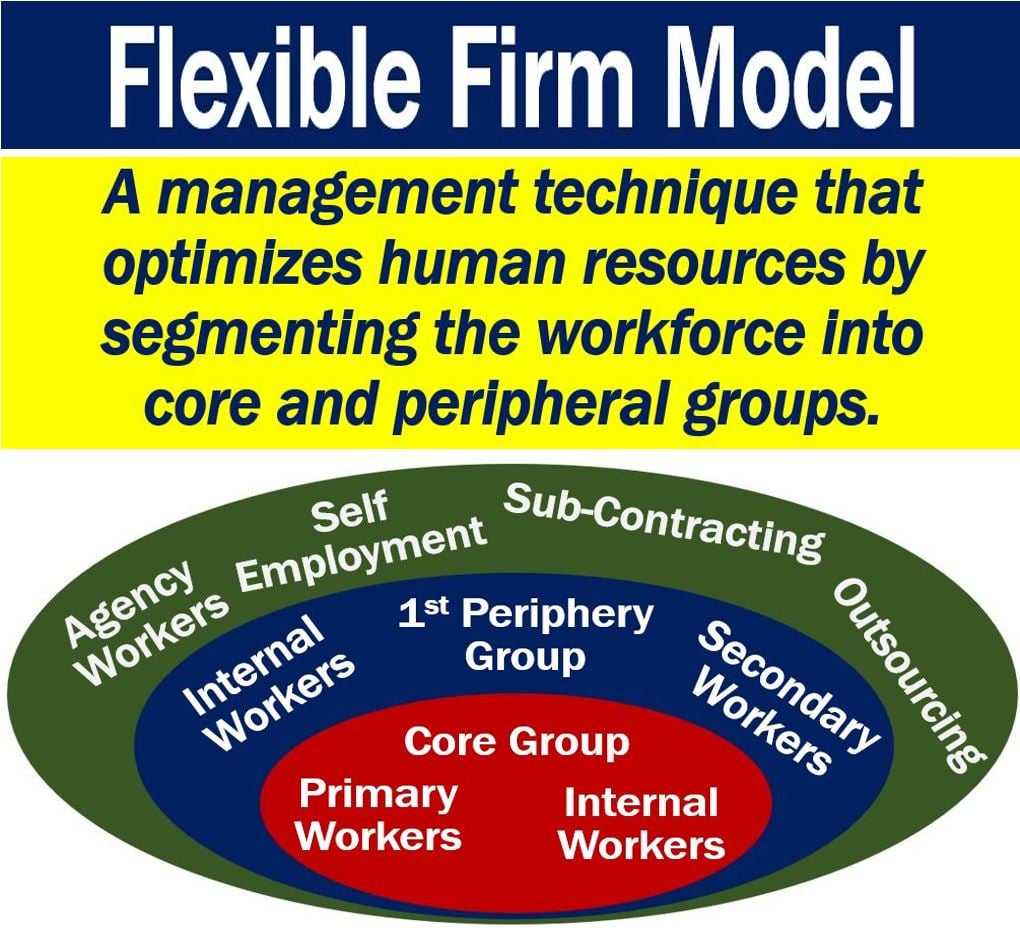What is the flexible firm model? Definition and examples
The Flexible Firm Model is an organization and workplace management technique. It uses different forms of flexibility to optimize the use of the company’s human resources. The Flexible Firm Model segments employees into the core and peripheral groups. The core group is difficult to replace while peripheral groups are easier
Core group members have specific experience or certain skills. Thus, they are hard to replace.
The peripheral group members, on the other hand, are easy to replace. The company only requires peripheral group workers for certain tasks or peak periods.
Job security
Employees prefer to belong to the core than the peripheral group. They prefer the core because that is where job security is stronger.
The Flexible Firm Model idea was first proposed in 1986 by Jon Atkinson of the Institute of Manpower Studies.
Oxford Index has the following definition of the term:
“A management technique for organizing the workplace using various forms of flexibility in order to optimize the use of human resources. It is based on the principle of segmenting the workforce into core and peripheral groups.”
“The core group is composed of employees that are vital to the organization, functionally flexible, and difficult to replace.”

Flexible firm – being proactive
If you are ‘proactive,’ you take action by causing change. In other words, you do not just react to change when it happens.
The idea behind the Flexible Firm Model is to be proactive in the rapidly-changing marketplace. In this context, ‘marketplace‘ has the same meaning as ‘market‘ in the abstract sense of the word.
The Flexible Firm Model suggests that we can design our workforce so that it proactively meets our business needs. It can achieve this through flexible workforce arrangements.
Regarding this concept, in an article in the TUTEBOX website, Rushda Mohinudeen writes:
“A concept of simply integrating flexible conditions into the administration an organization’s functional operations, in order to meet the demands of a highly competitive market and attain its strategic aims and goals.”
Mohinudeen adds that flexibility is a calculated risk that company’s use to survive. They also use it to gain competitive advantage.
Competitive advantage is a feature that gives a business an edge over its rivals.
Flexible Firm Model – a collaboration
The Flexible Firm Model is usually a collaboration between a company’s executives and its human resources department.
It is crucial that these two groups plan their operational strategy well. It is also vital that they communicate well.
Changes in the company, market, or industry may have a major effect on staffing with the Flexible Firm Model.
Do not confuse the term with ‘flexible specialization.’ Flexible specialization is a strategy companies use to become more competitive in a rapidly-changing market. They have multi-skilled employees and multi-use machines and equipment.

